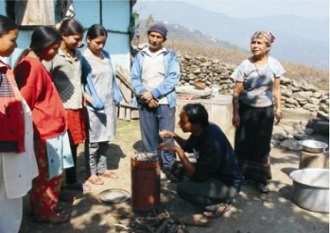Environ Health Perspect. 2010 Sep;118(9):1326-31.
Prenatal Exposure to Airborne Polycyclic Aromatic Hydrocarbons and Children’s Intelligence at 5 Years of Age in a Prospective Cohort Study in Poland.
Edwards SC, Jedrychowski W, Butscher M, Camann D, Kieltyka A, Mroz E, Flak E, Li Z, Wang S, Rauh V, Perera F.
Columbia Center for Children’s Environmental Health, Mailman School of Public Health, Columbia University, New York, New York, USA.
Background: In this prospective cohort study of Caucasian mothers and children in Krakow, Poland, we evaluated the role of prenatal exposure to urban air pollutants in the pathogenesis of neurobehavioral disorders.
Objectives: The objective of this study was to investigate the relationship between prenatal polycyclic aromatic hydrocarbon (PAH) exposure and child intelligence at 5 years of age, controlling for potential confounders suspected to play a role in neurodevelopment.Methods: A cohort of pregnant, healthy, nonsmoking women was enrolled in Krakow, Poland, between 2001 and 2006. During pregnancy, participants were invited to complete a questionnaire and undergo 48-hr personal air monitoring to estimate their babies’ exposure, and to provide a blood sample and/or a cord blood sample at the time of delivery. Two hundred fourteen children were followed through 5 years of age, when their nonverbal reasoning ability was assessed using the Raven Coloured Progressive Matrices (RCPM).
Results: We found that higher (above the median of 17.96 ng/m3) prenatal exposure to airborne PAHs (range, 1.8-272.2 ng/m3) was associated with decreased RCPM scores at 5 years of age, after adjusting for potential confounding variables (n = 214). Further adjusting for maternal intelligence, lead, or dietary PAHs did not alter this association. The reduction in RCPM score associated with high airborne PAH exposure corresponded to an estimated average decrease of 3.8 IQ points.
Conclusions: These results suggest that prenatal exposure to airborne PAHs adversely affects children’s cognitive development by 5 years of age, with potential implications for school performance. They are consistent with a recent finding in a parallel cohort in New York City.
Editor’s Summary: Polycyclic aromatic hydrocarbons (PAHs), such as benzo[a]pyrene, are released into ambient and indoor air from combustion sources (e.g., coal burning power plants, diesel and gasoline-powered vehicles, home heating and cooking) and are present in tobacco smoke and charred foods. Edwards et al. (p. 1326) studied the role of prenatal exposure to urban pollutants in the pathogenesis of neurobehavioral disorders in a prospective cohort study of Caucasian mothers and children in Krakow, Poland. The authors report that higher prenatal exposure to airborne PAHs was associated with decreased scores of nonverbal reasoning ability at 5 years of age. The reduction in nonverbal reasoning ability associated with high airborne PAH exposure corresponded to an estimated average decrease of 3.8 IQ points. The authors conclude that prenatal exposure to airborne PAHs adversely affects children’s cognitive development by 5 years of age. These findings have potential implications for school performance.



